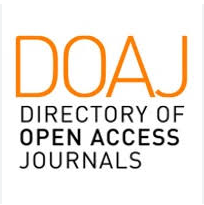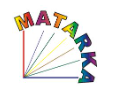Competitiveness of food and grocery retailers in Hungary, perceived by young consumers
Abstract
The aim of the study is to show what competitive factors are present in the Hungarian food and grocery retailing sector from the perspective of young consumers, i.e. to examine how and where young people shop, and what position the largest food and grocery retailers occupy in their minds when we examine the purchasing criteria and characteristics. To achieve these objectives, we conducted a quantitative survey in the form of an online questionnaire (CAWI). In February 2022, we asked university students about their attitudes towards shopping in general and daily shopping. The results show that young people have a positive attitude towards shopping, while their attitude towards daily grocery shopping is more neutral. The awareness of the chains surveyed is high. In terms of their shopping, they seem to have a high preference for discounters and supermarkets close to their home/daytime commute. In terms of sympathy for the individual chains, discounters are seen to stand out. It can be seen that young people already have an image of certain food and daily consumer goods retailers, so it may be worth targeting them when planning marketing work.
In terms of the purpose and results of the research, an important conclusion is that the young target group seems to be increasingly important as they have an insight into the chains and, due to their life situation, they are already increasingly present among the target groups where the focus on spendable income may be relevant. The results of the research presented in this paper will contribute to the existing knowledge by demonstrating to the academic community the purchasing behavior of a new target group. At the same time, the results are also useful for market players, as they provide good feedback on possible changes that may be needed in the area of communication or even marketing strategy.
References
Bauer, A. & Kolos, K., 2016. Márkamenedzsment. Budapest: Akadémiai Kiadó. https://doi.org/10.1556/9789634540106
Doyle, P., 1998. Marketing Management and Strategy. London: Prentice Hall
Faria, S., Carvalho, J. M. & Vale, V. T., 2022. Service quality and store design in retail competitiveness. International Journal of Retail & Distribution Management, 50(13), 184-199. https://doi.org/10.1108/ijrdm-01-2022-0005
Földi, K., 2012. A fogyasztói üzletválasztási döntések az élelmiszerorientált kiskereskedelemben. Elérhető: https://pea.lib.pte.hu/bitstream/handle/pea/2841/foldi-katalin-phd-2013.pdf?sequence=1&isAllowed=y (2023.08.10.)
Fornari, D., Fornari, E., Grandi, S., & Menegatti, M., 2016. Leading national brands facing store brands competition: Is price competitiveness the only thing that matters? Journal of Retailing and Consumer Services, 30, 234-241. https://doi.org/10.1016/j.jretconser.2016.02.001
gfk.hu, 2021. A diszkont csatorna forradalma [online] Elérhető: https://www.gfk.com/insights/A-diszkont-csatorna-forradalma (2023.03.14.)
GfK, 2023. Inflation, Innovation and insights: Carving out growth for retailers in 2023. Elérhető: https://www.gfk.com/hubfs/White-paper-for-retailers.pdf (2023.08.10.)
GKID, 2022. Közel 70 millió vásárlás pörgette tavaly az online kiskereskedelmet. [online] Elérhető: https://gkid.hu/2022/03/24/70-millio-online-vasarlas/ (2023.04.03.)
Hollingsworth, A., 2004. Increasing retail concentration: Evidence from the UK food retail sector. British Food Journal, 106(8), 629-638. https://doi.org/10.1108/00070700410553611
Ipsos, 2023. What Worries the World, 2023. június. Elérhető: https://www.ipsos.com/sites/default/files/ct/news/documents/2023-06/Global%20Report%20-%20What%20Worries%20the%20World%20June%2023-WEB.pdf (2023.08.10.)
Kelemen-Erdős, A., 2017. A kiskereskedelmi versenyelőny eszközrendszere. Az élelmiszer-kiskereskedelem példája. Vezetéstudomány, 48(12), 50-60. https://doi.org/10.14267/VEZTUD.2017.12.06
KSH, 2023. Az internetes vásárlások aránya az utolsó vásárlás időpontja szerint. [online] Elérhető: https://www.ksh.hu/stadat_files/ikt/hu/ikt0019.html (2023.04.02.)
Major, A., 2015. Sörpiaci helyzetkép Magyarországon: versenyképesség a sörszektorban. Gazdálkodás 59(5), 453–474.
Matyusz, Z. & Pistrui, B., 2020. Digitalizációs projektek a magyar kiskereskedelmi szektorban: Két meghatározó szegmens összehasonlítása empirikus példákon keresztül. Vezetéstudomány, 51(6), 27–41. https://doi.org/10.14267/VEZTUD.2020.06.04
McKinsey, 2020. Repülőrajt. A magyar gazdaság növekedési pályája 2030-ig. [online] Elérhető: https://www.mckinsey.com/hu/~/media/McKinsey/Locations/Europe%20and%20Middle%20East/Hungary/Our%20Insights/Flying%20start%20Powering%20up%20Hungary%20for%20a%20decade%20of%20growth/McK-Hungary-2030-Report-HU.pdf (2022. 12.11.)
Molnár, L., 2008. A korrepondencia-elemzés (CA) elmélete és gyakorlata. Kézirat, Miskolci Egyetem Marketing Intézet.
Németh, P., 2018. Férfi vásárlói generációk élelmiszervásárlási helyszínekről hozott döntései. Elérhető: https://ktk.pte.hu/sites/ktk.pte.hu/files/images/kepzes/phd/N%C3%A9meth%20P%C3%A9ter%20doktori_ertekezes_2018.pdf (2023.08.10.)
Németh, P., 2023. Élelmiszer- és napicikk kereskedők versenyképessége Magyarországon a fiatal vásárlók megítélése alapján. Konferencia-előadás, BGE KVIK Recesszió vs. konjunktúra 2023 – Lehetőségek, korlátok, aktualitások. Budapest, 2023.
NRC, 2020. 87% internetező hazánkban. Elérhető: https://nrc.hu/news/internetpenetracio-2/ (2023.08.10.)
Roslin, R. M., 2008. Hypermarkets and the Small Retailers in Malaysia: Exploring Retailers' Competitive Abilities. Journal of Asia-Pacific Business, 9(4), 329-343. https://doi.org/10.1080/10599230802453596
Śmigielska, G. & Oczkowska, R., 2017. Retailers’ competitiveness on global markets. International Entrepreneurship Review, 3(1), 175-196. https://doi.org/10.15678/PM.2017.0301.10
Statista, 2023. Internet penetration rate in Hungary from 2010 to 2022. [online] Elérhető: https://www.statista.com/statistics/1123184/hungary-internet-penetration-rate/?locale=en (2023.04.07)
Szakály, Z., Popovics, P., Szakály, M. & Kontor, E., 2020. A vásárlói magatartás elemzése az élelmiszer- és üzletválasztást befolyásoló tényezők alapján. Marketing&Menedzsment. 54(2), 7-17. https://doi.org/10.15170/mm.2020.54.ksz.ii.01
Törőcsik, M., 2016. Fogyasztói magatartás. Insight, trendek, vásárlók. Akadémiai Kiadó, Budapest. https://doi.org/10.1556/9789630597371
Törőcsik, M. & Szűcs, K., 2021. Fogyasztói magatartás. Mintázatok, trendek, alkalmazkodás. Akadémiai Kiadó, Budapest. https://doi.org/10.1556/9789634546351
Tuominen, P., 1999. Managing Brand Equity. [online] Elérhető: https://www.semanticscholar.org/paper/Managing-Brand-Equity-Tuominen/5a49dfc627a8ce55369687bc53c17b06c84e5252?p2df (2023. 04.11.)


























